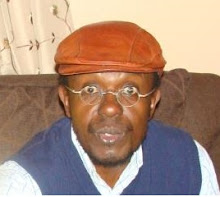Something I previously hadn’t
paid attention to caught my eyes as I was reading through the
history of Benin. It had to do with acceding to international sovereignty.
Although this happened on the First Day of August 60 years ago, which explains
why I was keen to dig into the history of Benin, the idea that an independent
nation could cede sovereignty seemed queer. So I decided to do some research.
It turns out
that in order for countries to be admitted as members of the United Nations,
they have to file a formal Declaration of acceptance of the obligations
contained in the Charter of the United Nations, which the regime in Porto-Novo
did on the 2nd of August 2020, a day after acceding to “full and
complete” independence.
In a letter
addressed to the then Secretary General of the UN, Mr. Dag Hammarskjöld, Mr Hubert Maga, then Prime Minister
of the Republic of Dahomey stated that his country wished to “assume all the
new responsibilities which have devolved upon it at the international level and
to co-operate in the activities of the United Nations community”. The
application letter goes on to state that the Government of the Republic of
Dahomey “declares that it accepts obligations stipulated in the Charter of the
United Nations…” To satisfy my curiosity, I dug farther to uncover what those obligations
were because that is the heart of the matter.
According to
Article 4 of the Charter of the United Nations, firstly, membership in the UN
is open to all other peace-loving states which accept the obligations contained
in the Charter and, in the judgement of the UN, are able and willing to carry
out those obligations. Secondly, the admission of any such state to membership
in the UN will be effected by decision of the General Assembly upon the
recommendation of the Security Council. This didn’t seem satisfactory. So I
turned to Article 2, which espouses the following five principles of the UN and
its members:
- Sovereign equality of all its Members
- Good faith in fulfilling all obligations in accordance with the present Charter
- Settlement of international disputes by peaceful means
- Exercise of refrain in international relations from the threat or use of force against the territorial integrity or political independence of any state, or any other manner inconsistent with the purposes of the UN
- Giving all assistance to the UN in any action it takes in accordance with the present Charter, and refraining from giving assistance to any state against which the UN is taking preventive or enforcement action.
In discussing
the contested subject of international delegation and state sovereignty, Oona Hathaway
(2008)[1]
demonstrates the existence of a tradition of scholarly work critical of the
threat to state sovereignty that international law poses. This happens to be
where I was also coming from. However, Hathaway’s contention is that in spite the
existence of tension between international delegation and state sovereignty, it
is not always a zero-sum game. There exists “substantial benefits of [international]
cooperation”.
His thesis can
be summarised as follows: “international law and international
delegation are deeply intertwined: international delegation arises from
international law, and most international law designed to have binding effect
involve some form of delegation. Hence, it is often necessary to expand our
field of vision to include both if we are to understand either one”.
[1] Hathaway, Oona A. “International
Delegation and State Sovereignty.” Law
and Contemporary Problems 71, no. 1 (2008): 115-49. Accessed August 1,
2020. www.jstor.org/stable/27592224.



